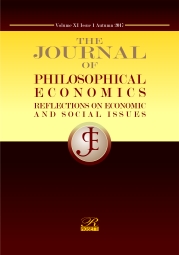The missing link: From Kautilya’s The Arthashastra to modern economics
The missing link: From Kautilya’s The Arthashastra to modern economics
Author(s): Marinko SkareSubject(s): Philosophy, Social Sciences, Economy, Special Branches of Philosophy, Sociology, Philosophy of Science, Social Theory, Socio-Economic Research
Published by: Editura Rosetti International
Keywords: Arthashastra; Kautilya; economic evolution; heterodox economics;
Summary/Abstract: The aim of this paper is twofold: first, to provide evidence supporting the thesis that Kautilya was the first political economist; second, to verify that a systematic study of political economy has begun long before the ideas and works of Adam Smith. It was in the works of Kautilya (around 375 B.C.). In order to validate the aims of our study, we look for evidence in his Arthashatra of rational behaviour, self-interest motivation, and market elements of a traditional commercial society. Providing a sound interpretation of Kautilya’s main arguments, we demonstrate that his is no less a systematic study in political economy than Smith’s The Wealth of Nations. Economics is a science that tries to offer policies and practices for creating and enriching a nation’s wealth, and in that sense, the Arthashastra (literal translation being The Science of Wealth) represents the first systematic manual of political economy. The development of economics as a science must take cognition of the economic principles and ideas presented in The Arthashastra so as to reveal the true origins of economic thought and its evolution. It is only by understanding methodological problems in a historical perspective we can understand the modern methodological and conceptual issues.
Journal: Journal of Philosophical Economics
- Issue Year: VI/2013
- Issue No: 2
- Page Range: 2-31
- Page Count: 30
- Language: English

